Halitosis is a common condition amongst patients today, with studies suggesting oral malodour could affect up to 50% of the population.[i] It’s a concern for patients when they visit the dentist, and it’s often a source of insecurity and embarrassment. Bad breath has been thought to heavily impact social anxiety, and an individual’s interpersonal relationships as a result.[ii]
Halitosis is often a symptom of larger problems, and its treatment should be paired with finding the root cause. The aetiology of halitosis varies between patients. At the top of the list for the NHS is simply eating or drinking strong-smelling or spicy foods and drinks,[iii] but more serious cases can be indicated. These might concern the management of oral hygiene, or even the presence of diabetes.[iv]
For those with the condition it’s an increasingly common problem, and dentists should be aware of how bad breath and diabetes can interact.
An important relationship
 Diabetic patients are at an increased risk of developing oral malodour as a result of their pre-existing condition.[v] The relationship diabetic patients have with their oral health management has been covered extensively. The individual’s regulation of blood sugars (for example, through diet control, or administering medication or insulin) impacts their oral health intimately.
Diabetic patients are at an increased risk of developing oral malodour as a result of their pre-existing condition.[v] The relationship diabetic patients have with their oral health management has been covered extensively. The individual’s regulation of blood sugars (for example, through diet control, or administering medication or insulin) impacts their oral health intimately.
Poor glycaemic control can introduce an increased rate of sugar into the oral cavity through the blood or saliva. This creates an environment for extensive plaque build-up, and diabetic patients of all ages can develop a higher rate and severity of periodontal diseases than their non-diabetic counterparts.[vi] Studies suggest that inflamed periodontal tissue, caused by plaque build-up, is related to the formation of volatile sulphur compounds.[vii] These compounds are mainly responsible for halitosis,[viii] producing unpleasant odour when the bacteria break down over time and release them.[ix]
Moreover, expanded interdental spaces as a result of periodontitis provide the opportunity for food debris to become stuck, producing and exacerbating oral malodour.[x] Periodontal diseases are not the sole cause for halitosis, and patients with gingivitis or periodontitis do not always have chronic bad breath. However, these diseases do create an environment that increases the prevalence of oral malodour.[xi]
Xerostomia is also common in diabetic patients,[xii] with studies connecting lower salivary flow with higher HbA1c values.[xiii] Inhibited salivary flow and an increased ratio of glucose within its limited output once again provide diabetic patients with the ideal environment for bacteria growth. Diminished salivary flow stops food and bacterial debris from being dislodged and removed from the mouth, leaving it to potentially cause bad breath.[xiv]
More than bad breath
Diabetic patients with halitosis may not be presenting with a directly related oral health issue. Clinicians should look out for patients whose breath smells fruity, likened to pear drop sweets or nail polish remover, as it is a symptom of diabetic ketoacidosis.[xv] This condition is the most common acute hyperglycaemic emergency for diabetic patients, and requires immediate and urgent attention.[xvi]
Keto breath manifests when a diabetic individual is deficient in insulin, which prohibits the breakdown of glucose for energy. Adipose tissue is broken down, yielding fatty acids that are converted further into ketones for energy use. They accumulate quickly, developing a hyperosmolar state and the fruity breath.[xvii] This is not an issue to be solved in dentistry. If noticed, the patient should check their ketone levels, and where appropriate contact their diabetes care team or go to A&E.[xviii]
Effective care
 Dentists need to understand a diabetic patient’s complete health history, collaborating with their diabetic care team where necessary, in order to provide excellent dental care.[xix] This equips them with the knowledge of how the patient’s condition and oral health may interact.
Dentists need to understand a diabetic patient’s complete health history, collaborating with their diabetic care team where necessary, in order to provide excellent dental care.[xix] This equips them with the knowledge of how the patient’s condition and oral health may interact.
Ensuring patients follow a dedicated oral hygiene routine with consistent tooth brushing and interdental cleaning can minimise the effects of plaque build-up and the development of periodontal diseases. Oral hygiene products made specifically for patients with xerostomia may also be appropriate.
The source of bad breath can be effectively targeted with an appropriate mouth rinse. Using the right active oral rinse can eliminate only the halitosis-related bacteria in a microbiome where bacterial diversity is important. As a result it could improve a patient’s self-confidence and overall oral health, with long-term mental and general health effects.[xx]
The perfect solution for your patients could be The Breath Co 12-Hour Fresh Breath Oral Rinse, which is unconditionally guaranteed to stop bad breath. Suitable for diabetic patients, the patented formula targets the source of halitosis with the natural germ fighting power of oxygen. Your patients can experience 12 hours of confidence with a formula that is recognised as the most effective long-term solution for the prevention of bad breath, available without a prescription.
Bad breath is often a result of various oral issues allowing the growth of bacteria, and diabetic patients may struggle to keep up with an effective oral hygiene routine that works around their condition. However, with the right support, effective glycaemic control, and a tailored oral health routine, they can still feel confident and fresh, every day.

For more information about The Breath Co, please visit http://www.thebreathco.com/
Sharon Kidd

GDC – 4566Diploma in Dental Hygiene 1993Hygienist
Sharon qualified as a dental nurse in The Royal London Dental Hospital in 1988. She trained as a dental hygienist in the Royal Army Dental Corps in 1993.
Sharon has experience working as a hygienist in a variety of different settings including dental hospital, domiciliary home visits, military, private and general practice. She works with specialists and general dental practitioners to support patients with different needs including those who are nervous to visit the dentist.
Sharon is also a professional educator for Waterpik, water flosser .
And enjoy family time at home with my husband two teenage daughters and family pets
[i] Scully, C., & Greenman, J. (2012). Halitology (breath odour: aetiopathogenesis and management). Oral diseases, 18(4), 333-345.
[ii] Mento, C., Lombardo, C., Milazzo, M., Whithorn, N. I., Boronat-Catalá, M., Almiñana-Pastor, P. J., … & Zoccali, R. A. (2021). Adolescence, adulthood and self-perceived halitosis: a role of psychological factors. Medicina, 57(6), 614.
[iii] NHS. (2021). Bad breath. NHS. (Online) Available at: https://www.nhs.uk/conditions/bad-breath/ [Accessed 19 July 2023]
[iv] Poniewierka, E., Pleskacz, M., Łuc-Pleskacz, N., & Kłaniecka-Broniek, J. (2022). Halitosis as a symptom of gastroenterological diseases. Gastroenterology Review/Przegląd Gastroenterologiczny, 17(1), 17-20.
[v] Miller, A., & Ouanounou, A. (2020). Diagnosis, management, and dental considerations for the diabetic patient. J Can Dent Assoc, 86(k8), 1488-2159.
[vi] Borgnakke, W. S. (2019). IDF Diabetes Atlas: Diabetes and oral health–A two-way relationship of clinical importance. Diabetes research and clinical practice, 157, 107839.
[vii] De Geest, S., Laleman, I., Teughels, W., Dekeyser, C., & Quirynen, M. (2016). Periodontal diseases as a source of halitosis: a review of the evidence and treatment approaches for dentists and dental hygienists. Periodontology 2000, 71(1), 213-227.
[viii] Aylıkcı, B. U., & Çolak, H. (2013). Halitosis: From diagnosis to management. Journal of natural science, biology, and medicine, 4(1), 14.
[ix] Wu, J., Cannon, R. D., Ji, P., Farella, M., & Mei, L. (2020). Halitosis: prevalence, risk factors, sources, measurement and treatment–a review of the literature. Australian dental journal, 65(1), 4-11.
[x] De Geest, S., Laleman, I., Teughels, W., Dekeyser, C., & Quirynen, M. (2016). Periodontal diseases as a source of halitosis: a review of the evidence and treatment approaches for dentists and dental hygienists. Periodontology 2000, 71(1), 213-227
[xi] De Geest, S., Laleman, I., Teughels, W., Dekeyser, C., & Quirynen, M. (2016). Periodontal diseases as a source of halitosis: a review of the evidence and treatment approaches for dentists and dental hygienists. Periodontology 2000, 71(1), 213-227.
[xii] Shahbaz, M., Kazmi, F., Majeed, H. A., Manzar, S., Qureshi, F. A., & Rashid, S. (2022). Oral manifestations: a reliable indicator for undiagnosed diabetes mellitus patients. European Journal of Dentistry.
[xiii] Mauri-Obradors, E., Estrugo-Devesa, A., Jané-Salas, E., Viñas, M., & López-López, J. (2017). Oral manifestations of Diabetes Mellitus. A systematic review. Medicina oral, patologia oral y cirugia bucal, 22(5), e586.
[xiv] Aminu, N., Muhammad, A., & Yabo, B. B. (2021). CLASSIFICATION OF ETIOLOGY AND PATHOGENESIS OF HALITOSIS AND IT’S TREATMENT.
[xv] NHS, (2023). Diabetic ketoacidosis, NHS. (Online) Available at: https://www.nhs.uk/conditions/diabetic-ketoacidosis/ [Accessed 19 July 2023]
[xvi] Dhatariya, K. K., Glaser, N. S., Codner, E., & Umpierrez, G. E. (2020). Diabetic ketoacidosis. Nature Reviews Disease Primers, 6(1), 40.
[xvii] Westerberg, D. P. (2013). Diabetic ketoacidosis: evaluation and treatment. American family physician, 87(5), 337-346.
[xviii] NHS, (2023). Diabetic ketoacidosis, NHS. (Online) Available at: https://www.nhs.uk/conditions/diabetic-ketoacidosis/ [Accessed 19 July 2023]
[xix] Miller, A., & Ouanounou, A. (2020). Diagnosis, management, and dental considerations for the diabetic patient. J Can Dent Assoc, 86(k8), 1488-2159.
[xx] de Jongh, A., van Wijk, A. J., Horstman, M., & de Baat, C. (2016). Self-perceived halitosis influences social interactions. BMC Oral Health, 16, 1-7.





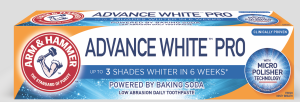 Tooth whitening is one of the largest growing cosmetic procedures in the UK, with the industry now estimated to be worth over £40m annually, as more and more people endeavour to emulate their celebrity idols.
Tooth whitening is one of the largest growing cosmetic procedures in the UK, with the industry now estimated to be worth over £40m annually, as more and more people endeavour to emulate their celebrity idols.

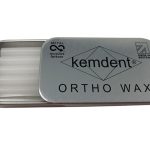



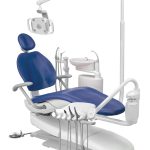
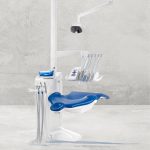
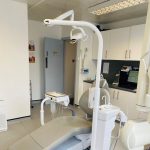




 Diabetic patients are at an increased risk of developing oral malodour as a result of their pre-existing condition.
Diabetic patients are at an increased risk of developing oral malodour as a result of their pre-existing condition. Dentists need to understand a diabetic patient’s complete health history, collaborating with their diabetic care team where necessary, in order to provide excellent dental care.
Dentists need to understand a diabetic patient’s complete health history, collaborating with their diabetic care team where necessary, in order to provide excellent dental care.



